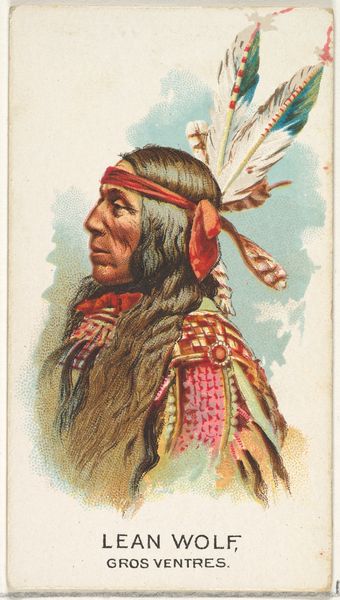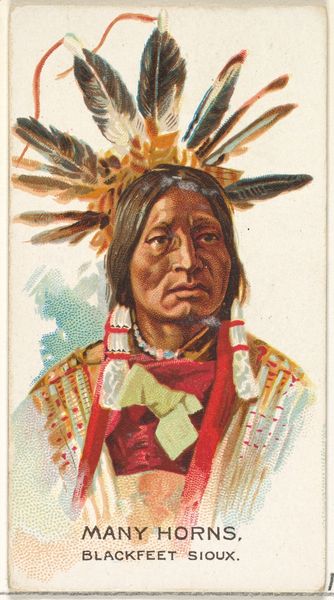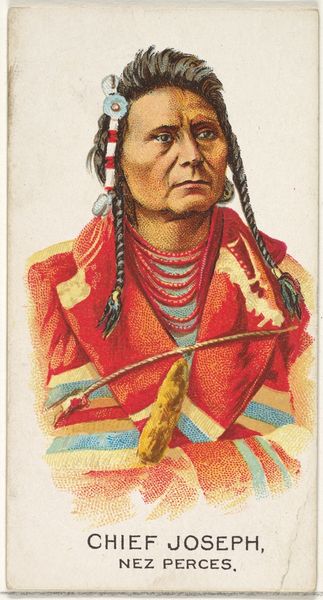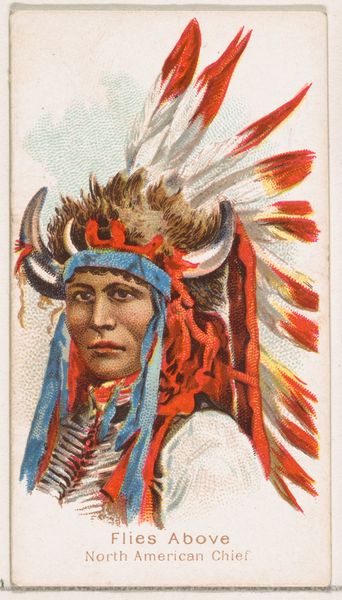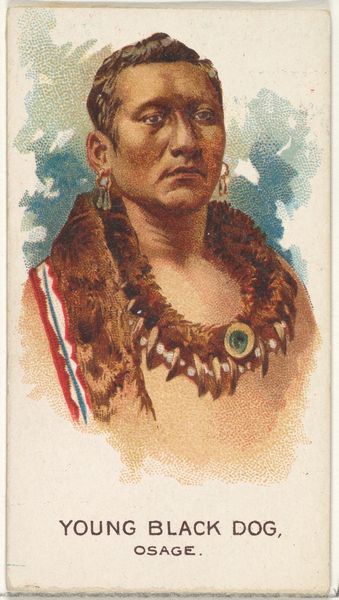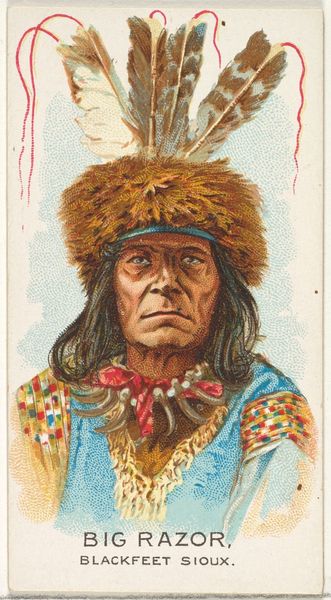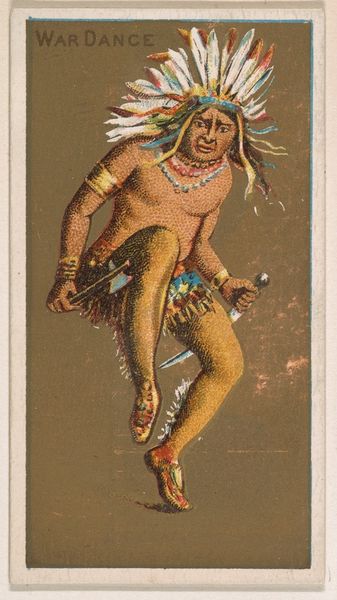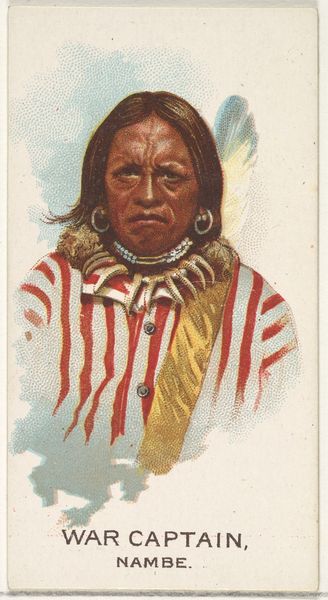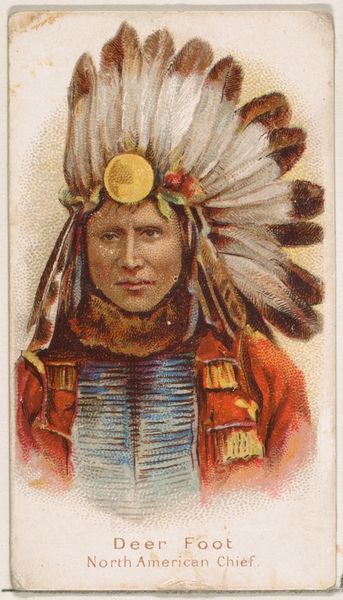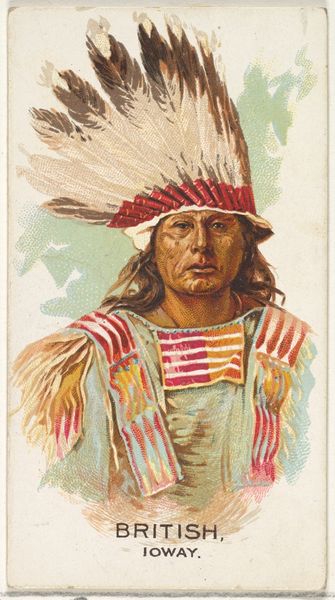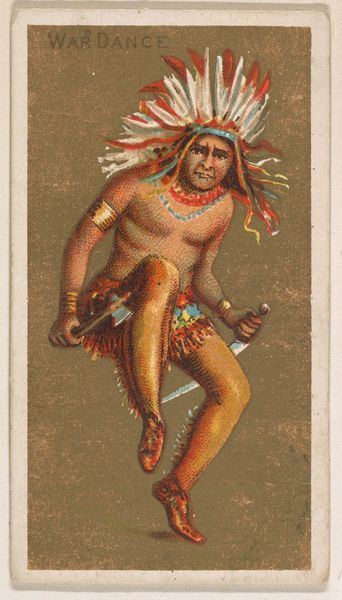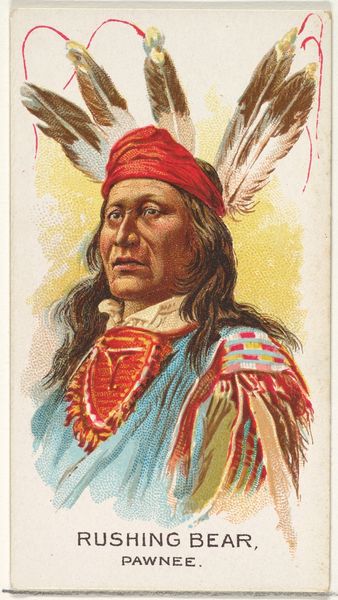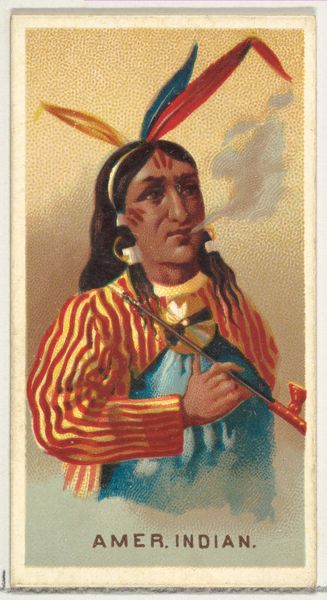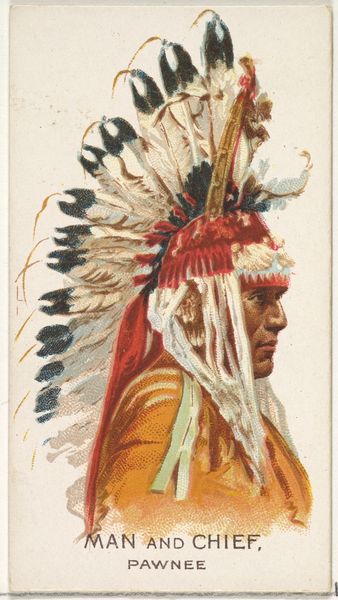
Tomahawk, from the Arms of All Nations series (N3) for Allen & Ginter Cigarettes Brands 1887
0:00
0:00
Dimensions: Sheet: 2 3/4 x 1 1/2 in. (7 x 3.8 cm)
Copyright: Public Domain
Curator: This print is titled "Tomahawk, from the Arms of All Nations series," created in 1887 by Allen & Ginter. It resides here at the Metropolitan Museum of Art. It was actually designed for a series of cigarette cards. Editor: The first thing that strikes me is how it attempts to distill and package indigeneity for mass consumption, particularly the ways it emphasizes ideas of ornamentation, “Indian” regalia, and weaponry. The composition seems to feed into existing power dynamics. Curator: The feathered headdress, tomahawk, and shield—they're more than just objects. They carry centuries of meaning related to protection, authority, and spiritual connection. The objects connect the individual to communal values and history. The very act of picturing him with them aims to symbolize, to codify an idea about identity. Editor: Right, and how the image reinforces stereotypical representations. Think about it: it’s included within the 'Arms of All Nations’ series, creating an equivalency between nationhood and armament. And then you remember that Allen & Ginter were profiting wildly from a new kind of mass media advertising – cigarettes. Curator: It's a fascinating conflation of power symbols, yes, but I also notice what is likely a very stylized approach toward its design elements – those flat, almost ukiyo-e inspired techniques for creating form. This visual echo enhances the subject's allure, positioning it somewhere between anthropological document and romantic vision. Editor: Allure, yes, but let’s be careful not to detach the historical context from our reading. This romanticizing glance smooths over very active political suppression and genocide happening simultaneously. Consider also who the audience was likely meant to be: affluent, white cigarette smokers looking for an exotic hit! Curator: Absolutely. This piece underscores the powerful ability of imagery to influence societal understanding. It gives a moment of reflection on symbols, how they are constructed, and how cultural narratives intertwine. Editor: I agree; it demands we look at the circumstances of representation itself. And what larger operations of cultural misunderstanding and erasure get conveniently swept away.
Comments
No comments
Be the first to comment and join the conversation on the ultimate creative platform.
